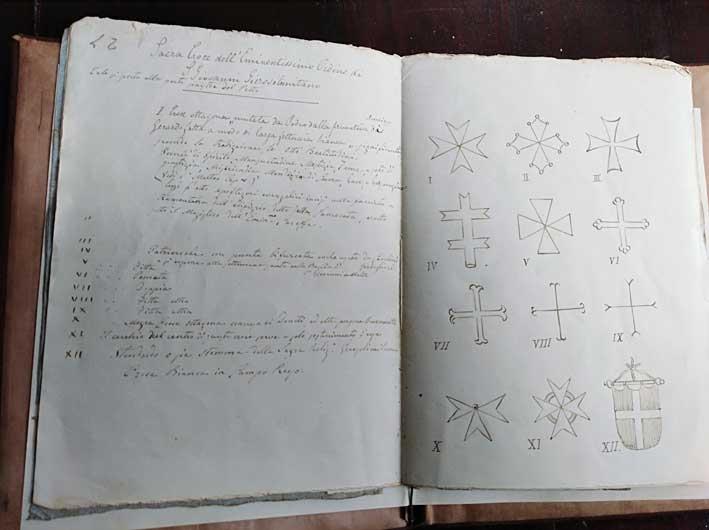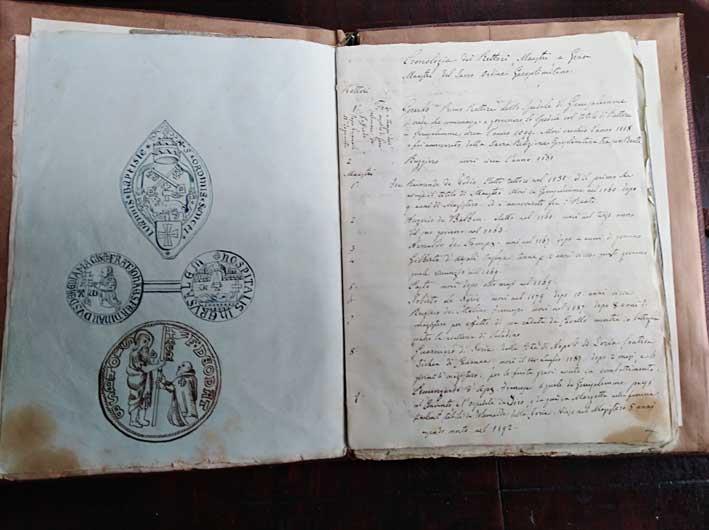The Great Siege
The Great Siege of Malta (1565) is famous worldwide. It took place at a time when the Ottoman Empire was at its climatic point having taken over most of Eastern Europe.
After the Knights had been ousted from Rhodes in 1523, they settled in Malta in 1530. It was Emperor Charles V of Spain who gave the Maltese Islands as well as Tripoli to the Knights.
Malta became the centre for shipbuilding and repair of the Knights' galleys and the base from which the Knights galleys sailed to raid the Ottoman naval forces between the narrows of Sicily and Africa. The success of these raids gave good reason for Soleyman the Magnificent (1490-1566), the Sultan of the Ottoman Empire to conclude that the only obstacle for his domination of the Mediterranean was the complete obliteration of the Knights of St John.
Despite the large Ottoman Armada, consisting of an overwhelming and superior force of some 200 galleys and 40,000 troops compared to the small defence army of some 9,000 men, including knights and local militia, (under the leadership of Grand Master Jean Parisot de la Vallette), Malta proved to be an impregnable fortress and against all odds emerged victorious.
This heroic stand has been immortalized throughout the ages and celebrated in verse and histories as incidents and details of the siege were reproduced in many drawings and in no small manner in heraldry.

Grandmasters' heraldry
There were 28 Grandmasters of the Order of St John in Malta. The first was Philippe Villiers de L'Isle Adam (French, 1530-1534) and the last being Ferdinand von Hompesch (German, 1797-1798).
An important aspect of the Grandmasters legacy is heraldry. The word "heraldry" is derived from the German heer - a host, an army - and held - a champion. Heraldry became increasingly important during the Middle Ages especially in the mid-12th century as families and armies created symbols by which one could easily identify families and lineages. The use continued to assume importance on the battlefield to identify princes and royalty on their armour.
The use and adoption of heraldry enabled the Grandmasters and Knights to have an easy tool for their recognition by their followers, especially during battle. The coat of arms was hereditary in the same manner as a Knight inherited leadership rights.

Blazoning (display vividly or prominently)
According to Buke: Burke, Bernard, The General Armoury of England, Scotland, Ireland, and Wales (Heritage Books, 1996), Inc., whenever a new Knight appeared at a Tournament, the herald sounded the trumpet and as the competitors attended with closed visors, it was his duty to explain the bearing of the shield or coat-armour belonging to each. This knowledge of the various devices and symbols was called Heraldry and as the announcement was accompanied with the sound of a trumpet, it was termed "blazoning the arms".
According to The Oxford Guide to Heraldry by Thomas Woodcock and John Martin Robinson, the oldest documented example of a coat of arms borne on a shield is where King Henry I of England is said to have bestowed on his son-in-law, Geoffrey Plantagenet, Count of Anjou, in 1127 AD the azure shield which bore four gold lions rampant.
The earliest coats of arms were fairly simple: bars or wavy lines, a lion rampant or an eagle displayed or an arrangement of fleur-de-lys. The designs became more complex as the years passed and the practice of quartering (incorporating the arms of other families acquired through marriages) developed.
|
Colour
|
Heraldic Name
|
Symbolism
|
|
Gold or Yellow
|
Or
|
Generosity and elevation of the mind
|
|
Silver or White
|
Argent
|
Peace and sincerity
|
|
Red
|
Gules
|
Warrior or martyr; Military strength and magnanimity
|
|
Blue
|
Azure
|
Truth and loyalty
|
|
Green
|
Vert
|
Hope, joy and loyalty in love
|
|
Black
|
Sable
|
Constancy or grief
|
|
Purple
|
Purpure
|
Royal majesty, sovereignty and justice
|
|
Orange
|
Tawny or Tenne
|
Worthy ambition
|
|
Maroon
|
Sanguine or Murray
|
Patient in battle and yet victorious
|
Colours
Colours can have special meaning in a "family crest" or coat of arms:
Animals
Animals symbolised different qualities. So for instance:
- Lions = bravery
- Dogs = faithfulness, reliability
- Stags = wisdom and long life
- Eagles = power and nobility
- Hares = speed
- Badgers = endurance or "hanging on"
Grandmasters coat of arms
The following is some information on the coat of arms of some of the Grandmasters of the Order of the Knights of St John:
- The coat of arms of L'Isle-Adam (1533-34) was an extended right arm vested with ermine in a blue field with a maniple of the same, pendant in a gold field.
- The coat of arms of Pietro di Ponte (Du Pont) (1534-35) was a red St Andrew's cross in silver filed.
- Didier De Sainte Jalle (1536). His arms were a silver goose on a golden field.
- Juan D'Omedes (1536-53). He arms of d'Omedes were three towers in a red field, joined to a golden field with a green pine tree.
- La Vallette (1557-1568). The arms of La Vallette were a silver falcon and a golden lion on a red field.
- A.M. De Vilhena (1722-1736). The arms of Manoel were a red lion on a silver field but as his device was similar to that of Grandmaster La Cassiere, the arms of Vilhena, a golden winged right hand grasping a sword, on a red field, were later on, quartered with the Cross of the Order.
Indeed just as a picture tells a story, the coat of arms and heraldry can give a true testimony of the virtues they are meant to represent. Or else they could be just what they are; a bunch of symbols and colours coined up through mere imagination and frivolous vanity. The only way this can be judged is how the person/s carrying the standard performed in real life.
Still, the origins and their symbolic meaning of coats of arms became ever-increasingly popular and elaborate with the passage of time and still evoke curiosity and study in an effort to decipher the "hidden language" behind the symbolic design.